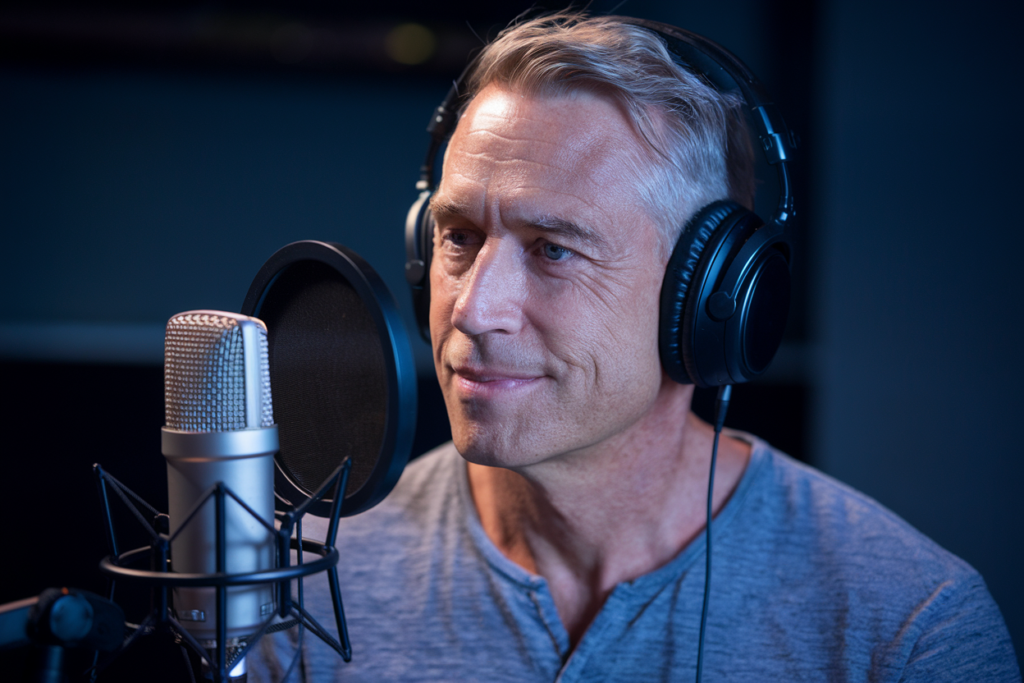When it comes to voiceovers, the choice between American and British English can make a significant impact on your project. Each accent carries its own unique nuances that resonate differently with audiences. Whether you’re producing a commercial, an animated film, or an e-learning module, understanding these distinctions is key to connecting with your viewers.
Key Takeaways
- Accent Impact: The choice between American and British English voiceovers significantly influences audience perception, with each accent offering distinct characteristics that cater to different demographics.
- Pronunciation Differences: Key variations in pronunciation, such as the prominence of “r” sounds in American English versus non-rhotic accents in British English, affect message reception and engagement.
- Cultural Context: Cultural influences play a vital role in shaping voiceover styles; American English often conveys warmth and relatability, while British English exudes sophistication and authority.
- Industry Trends: The US voiceover industry is evolving towards authentic performances that resonate with audiences, reflecting genuine emotions and cultural nuances tailored to specific genres.
- Voice Artist Selection: When choosing a voice artist, consider project goals and target audience; clarity, emotion, and adaptability are essential traits for effective communication.
Overview of Voiceovers
Voiceovers play a crucial role in conveying messages across various media. Choosing the right voiceover talent impacts how audiences perceive your project. American and British English accents offer distinct characteristics that can enhance or alter the tone of your content.
American English voiceovers typically exhibit a casual, approachable quality. This accent resonates well with diverse audiences, making it ideal for commercials and e-learning modules aimed at a broad demographic. The clarity and warmth of American accents facilitate relatability, which is vital for engaging listeners.
British English voiceovers often convey sophistication and authority. This accent can lend an air of credibility to corporate videos or high-end products. The nuances in pronunciation and intonation create a unique listening experience that may appeal to specific target markets.
When selecting a voice artist, consider the project’s goals and intended audience. A skilled voice actor understands how to adapt their delivery based on context, ensuring effective communication. Clarity, emotion, and engagement are essential attributes that define exceptional voice over talent.
Understanding the nuances between American and British English in voiceovers allows you to make informed decisions when choosing your next project’s voice over artist. Each accent offers unique benefits that cater to different audience preferences, so aligning your choice with project objectives enhances overall impact.
Key Differences Between American and British English Voiceovers
Understanding the differences between American and British English voiceovers can significantly impact your project’s effectiveness. Each accent carries unique characteristics that resonate differently with audiences.
Pronunciation Variations
Pronunciation variations between American and British English include distinct vowel sounds, consonant pronunciations, and syllable emphasis. For example, in American English, the “r” sound in words like “car” is pronounced more prominently than in British English. Conversely, British English often features non-rhotic accents where the “r” at the end of words isn’t pronounced. These nuances affect how a message is perceived and can influence audience engagement.
Accent and Intonation
Accent and intonation play crucial roles in conveying emotion and intent within voiceovers. American English typically uses a more relaxed intonation pattern that creates a casual atmosphere, making it suitable for diverse demographics. In contrast, British English often employs varied pitch levels that can convey sophistication or authority, appealing to specific target markets. Selecting the appropriate accent based on your project’s goals ensures effective communication with your intended audience.
Cultural Influences on Voiceovers
Cultural influences significantly shape voiceovers, affecting style, delivery, and audience engagement. Understanding these factors enhances the effectiveness of your project.
Media Representation
Media representation plays a crucial role in defining how voiceovers resonate with audiences. American media often portrays characters using informal and relatable language, aligning with the casual tone typical of American English voiceovers. This approach fosters a sense of familiarity among viewers. In contrast, British media frequently emphasizes elegance and refinement in its narratives, leading to a preference for sophisticated British English voiceover talent that conveys authority and tradition. Projects leveraging these cultural nuances can tap into specific audience expectations.
Audience Perception
Audience perception varies widely based on cultural context. American English voice actors evoke feelings of warmth and accessibility, appealing to diverse demographics across various platforms like commercials or animated films. Conversely, British English voice artists command respect and convey professionalism through their varied intonation patterns. Recognizing these differences allows you to select the appropriate voiceover talent that resonates with your target market effectively. By aligning your project’s objectives with the right accent and tone, you create a deeper connection with your audience’s cultural sensibilities.
Voiceover Industry Landscape in the USA
The voiceover industry in the USA thrives with a diverse array of voice talent catering to various media formats. Understanding this landscape helps you make informed decisions when selecting voice artists for your projects.
Major Players and Trends
Major players in the US voiceover market include freelance voice actors, specialized studios, and large production companies. Each contributes uniquely to the industry, offering an extensive range of services from commercial advertisements to audiobooks and e-learning modules.
Current trends emphasize the increasing demand for authentic voices that resonate with target audiences. You’ll notice a shift towards hiring voice talents who can deliver relatable performances, reflecting genuine emotions and cultural nuances. The rise of remote recording technologies also enables seamless collaboration across geographic boundaries, allowing you access to exceptional talent regardless of location.
Moreover, there’s a growing emphasis on specialization within different genres. Voice artists are increasingly honing their skills for specific markets such as gaming or corporate training videos. This trend ensures that you receive high-quality performances tailored specifically to your project’s needs.
As audience preferences evolve, so do expectations regarding vocal delivery styles. Casual and conversational tones dominate commercial spaces, while polished and authoritative accents remain favored in educational content. By understanding these trends, you gain insights into how best to align your project goals with suitable voiceover talent selections.
Conclusion
Choosing between American and British English voiceovers can significantly impact your project’s success. By understanding the unique characteristics of each accent you can align your voiceover selection with your audience’s preferences and project goals.
American English offers a casual approach that resonates with a wide demographic while British English brings sophistication and authority to specific markets.
As the demand for authentic voices continues to grow adapting to these trends will enhance viewer engagement. Keep in mind how cultural influences shape delivery styles ensuring you select the right talent for maximum effect. Making informed choices in voiceover accents not only elevates your content but also connects deeply with your audience.
Frequently Asked Questions
What is the main difference between American and British English voiceovers?
American English voiceovers are typically casual and approachable, making them suitable for a broad audience. In contrast, British English voiceovers often convey sophistication and authority, appealing to specific target markets. Understanding these differences helps in selecting the right accent for your project.
Why is choosing the right accent important for voiceover projects?
The right accent enhances audience connection and engagement by aligning with the project’s goals. A skilled voice actor can adapt their delivery to effectively communicate messages, whether through familiarity of American accents or the elegance of British accents.
How do pronunciation variations affect voiceover effectiveness?
Pronunciation differences, such as the prominence of “r” sounds in American English versus non-rhotic British accents, influence how emotions and intentions are conveyed. This can impact audience perception significantly based on cultural expectations tied to each accent.
What role does culture play in voiceover selection?
Cultural influences shape style and delivery in voiceovers. For instance, American media often favors informal language that creates familiarity, while British media emphasizes elegance. These nuances affect how audiences engage with content based on their cultural backgrounds.
What trends are currently shaping the US voiceover industry?
The US voiceover industry sees a growing demand for authentic voices that resonate emotionally with audiences. Remote recording technologies allow access to diverse talent across locations, while specialization within genres ensures high-quality performances tailored to specific project needs.







